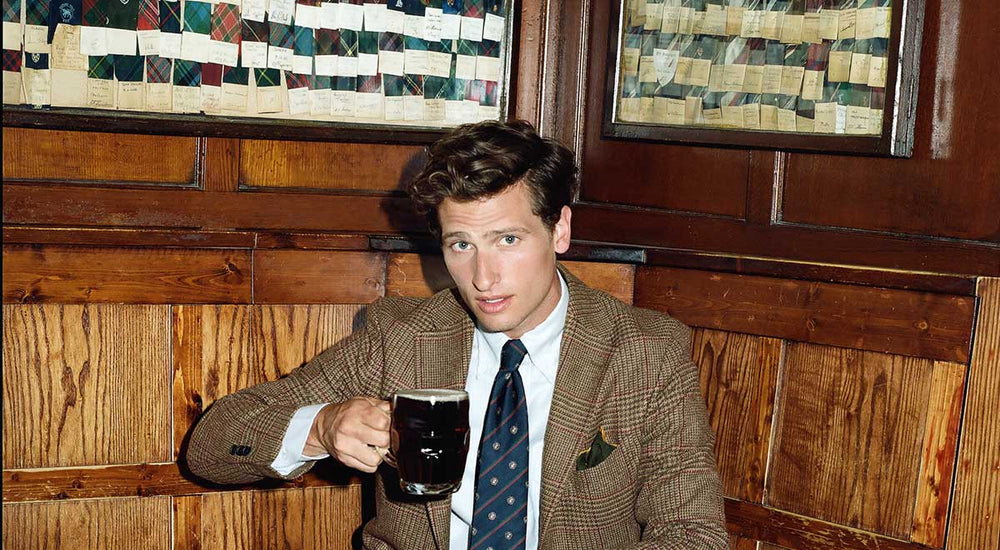In the Club
By G. Bruce Boyer
Jul 13, 2022

G. Bruce Boyer pulls back the curtain and invites us into the world of club ties.
The photos in this article were shot in The Bear, Oxford's oldest pub, and home to a collection of more than 4,500 club tie clippings. A tradition beginning in the 1950s, patrons of the pub can receive a free half pint in exchange for the tail of their club tie, which is cut off with a pair of scissors. The clipping is then added to the pub's venerable collection, which is organised by category: sports teams, motoring clubs, universities and so on.
The point of uniforms of any sort is both inclusivity and exclusivity. Whether it is the tightly regulated outfits worn by sports teams and professional associations, or the more unspoken rules of business, locale, or merely the group with which one is associated socially. Today, this is both more and less true than it used to be, and it’s all because we’re all more transient and mobile than we ever were. We change jobs, homes, even countries these days with an equanimity at which our ancestors would have marvelled. It means that we must learn to identify and be identified as quickly as possible to get along. And that means attention to our appearance, to how we present ourselves.

For men, the classic example of this subtle art, funnily enough, is the tie: a small but sure sign and symbol of identification since its origin. When the British Army finally gave up the blazing redcoat uniforms decorated with bright ribbon – to the desolate disappointment of enemy sharpshooters – for khaki camouflage, regimental colours were preserved in their neckwear. Soon after, public schools, universities, and private clubs joined in this sartorial accessory of distinction, seeing it as a minor but highly telling symbol of one’s status in society. Others took immediate notice and said, “He belongs.” Or, lacking the appropriate insignia around the neck, “Not one of us.” In the highly class-conscious Victorian Age in which the boundaries were becoming more and more porous and thus more proprietary, this small signage of cloth became enormously important.
The first club tie is said to be that of the 1837 Exeter College rowing team, woven in the red and black colours of the college at Oxford. This is the same period that was beginning to see the distinctively striped blazer as well, another symbol of membership in an exclusive club. There was a great proliferation of school, military, and club ties in the second half of the 19th century and the opening decades of the 20th. I leave it to others to account for this, but there was, apart from its symbolic value, another reason for the popularity of the insignia tie. The Jacquard loom, which could weave intricate patterns in fabric -- rather than having them printed or sewn on – had been invented in the first decade of the 19th century, but only adapted to manufacturing neckwear in the early 20th.

Today, while these ties can still be referential to groups, club neckwear is seen not so much as formally proprietary as a discreetly stylish statement by the conspirators of taste. Which, I suppose, may still be considered a club of sorts. Are you a member by any chance?


